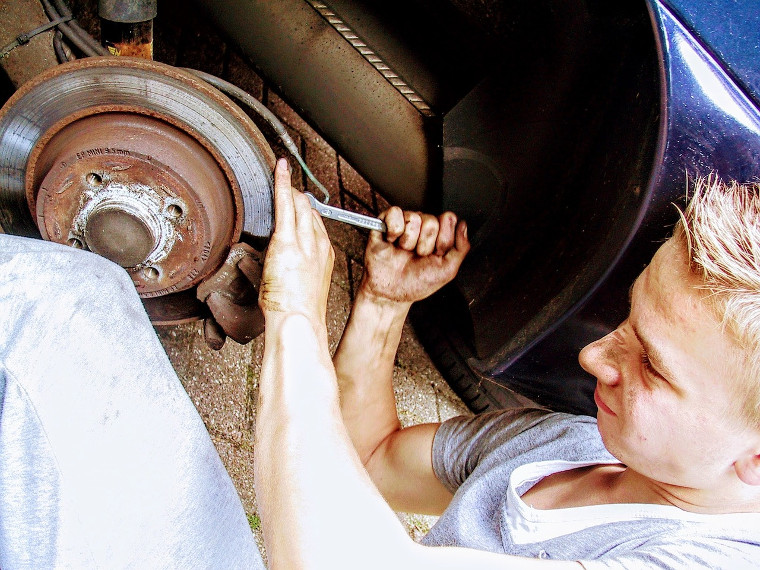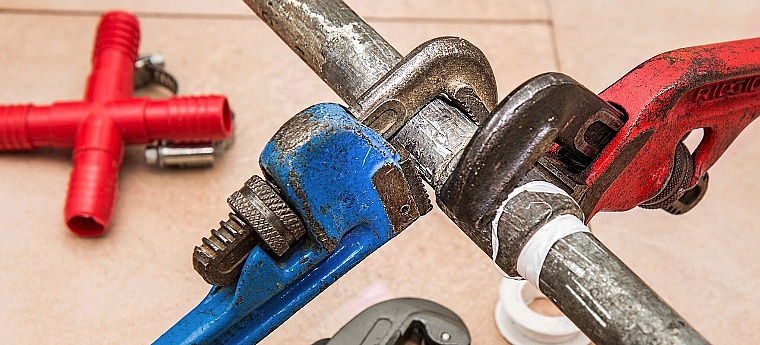Unexpected Car Repair: How to Pay if You Don't Have Emergency Funding
Your car breaks down just when you need it the most. Check out how to get the money to pay for the cost of your car repair if you have no emergency fund.

What's the worst that could happen? Well, in this game we call life, the answer to that is "there's always something." One of those unexpected and unfortunate events is your car breaking down. Just when you need it the most and right at the time when you don't have money to spare to pay for its repair. According to AAA, the average cost of a car repair ranges from $500 to $600. Maintaining a new vehicle costs around $1,186 a year just to keep it running. Based on all that, how much do you think it would cost to get your old clunker road worthy again? Maybe more than you can afford. Of course, everyone says "build an emergency fund, that way you won't get caught unawares with your pockets going on empty." But it’s not always so easy for some of us to put away hundreds of dollars. So, what do you do when you're in that particular hole? Well, not to worry. There are some options that may be open to you.
Check if You Have Coverage
It’s a good bet that you have some form of coverage that will pay for some of the expenses on that repair bill. If your car is new (at most three years old or less than 36,000 miles), then the carmaker's warranty may cover some of the repair costs. Older cars may be covered by the extended warranty, that is, if you opted for extended coverage. If the repair you require was caused by an accident, your auto insurance should provide emergency roadside assistance as well as pay for some of the repair expenses as long as you pay for your deductible first.
Even if you weren't in an accident, check with your insurance provider to see if they provide free emergency roadside assistance. Some companies and organizations such as AAA and AARP provide free roadside assistance to their members. Even some credit card companies offer the same. While roadside assistance isn't going to get your car up and running again, it'll help ease some of the expense, and you won't have to worry about leaving your car where it broke down.

Shop Around for a Good Deal
Before you try to figure out where you need to get the money, you need to find out how much you’ll need to pay. Ask for estimates from at least three reputable repair shops. Let them know that you're shopping around and would like to know how their offer compares to others. Inquire about any discounts that they have available. Some repair shops also offer payment plans which can be less heavy on your wallet than a lump sum payment. If you're a member of AAA, there are AAA approved repair shops that you can get in touch with. These shops may offer discounts on labor to members, as well as a 24-month or 24,000-mile guarantee on parts and labor.
If the estimates provided are still not within your budget, you can check with technical or vocational schools where you live. Find out if they teach classes on automotive mechanics. If they do, maybe they can use your car in one of their classes. You may be able to work out a deal where they get a car to work on, and you'll be responsible for paying for the parts needed.
Barter with a Friend
If you can't get a good deal with a car repair shop or professional mechanic, maybe you know someone who's pretty handy with cars – a neighbor, family member, or friend who has the time and skill to fix your car in exchange for something of value such as something you own or a skill or service that you can provide him.

Where to Get the Money
Once you get a good offer from a reputable repair shop, you're going to need to get the money to pay for the cost of repair. And there are several options to choose from.
#1: Sell Personal Items for Quick Cash
If you have stuff that you don't need, use, or want, you can sell them on Craigslist, eBay, or at a garage sale for some quick cash. While you may not be able to raise as much cash as you'll need to pay the repair bill, every single dollar counts.
#2: Borrow from Friends and Family
If you're going to borrow money, it might be best to get a loan that's interest-free. And you can only do that with friends and family. Now, this is a very tricky situation to be in because non-payment can and probably will hurt your relationship. To ensure that you avoid this, create a realistic payment plan that is doable, fair, and amenable to your generous family member or friend.
#3: Consider Using Your Credit Card
This is an ideal choice if you have a credit card that provides a warranty on bogus or bad repairs. It's even better if they offer a low-interest rate. Now, the key thing here is to know whether or not the credit card company offers this kind of protection and quite a lot of them do. Also, you'll need to find out just how much protection they offer and what the proper procedure is if you need to claim that warranty.
For those with really good credit (670+), here's an even better option - apply for a zero percent introductory APR credit card and use that to pay for your repair bill. Of course, you'll need to make sure that you will be able to pay off the balance before that introductory interest rate ends (typically six months to a year and a half). This is because the APR tends to go up after that, averaging between 15.49 percent to 24.24 percent APR.
Whether you get a new credit card with a zero percent APR or use your old one, you need to make sure that you can keep up with the payments so that you don't end up paying a lot due to interest charges. Make a payment plan and stick with it.
Also, don't use the cash advance feature of your credit card if you can avoid it. This is because cash advances usually have a high-interest rate which starts charging you interest on the day you made the transaction. When the card is swiped, interest charges normally kick in after 21 days from the date of the purchase.
#4: Get a Personal Loan
A personal loan is a type of installment loan that is unsecured. What this means is that you don't put up any collateral in exchange for getting the loan. Now, compared to credit cards, personal loans have a much lower interest rate for a fixed amount of time. The loan amounts typically range between $1,000 to $5,000 and the terms can be between two to five years. Of course, the loan amount, interest rate, and terms of car repair personal loan will all depend on your credit score. But the great thing about this type of loan is that you can easily fit the monthly payment into your budget since you're getting a fixed rate. Plus, there are a lot of lenders in this market such as credit unions, banks, and online lenders. This allows you to shop for the best rate available. And while having good credit will get you lower interest rates, even those with a bad credit score may find that there are lenders who are willing to give them a fair APR.
#5: Get a Car Title Loan
A car title loan is a type of secured loan where you get a loan using your car as collateral. The loan amount will typically be a quarter to half of your car's value. Keep in mind that this is not a recommended step unless all the other options listed are not open to you. This is because a lot of lenders that offer this type of loan offer exceedingly high APRs. That's not all. If you fail to pay the loan off in time, the lender will roll the loan over which means that you'll end up with more fees and more interest.
Here are two things you need to do to ensure you don't get in over your head with a car title loan:
- Keep the term of the loan between nine to 12 months. This gives you enough time to repay the loan in full without defaulting – but not too much time that you end up paying a total amount equal to the down payment for a new car.
- Make sure that you afford the monthly payment which should apply equally to the principal of the loan and the interest.
- Look for a reasonable APR. While the national average APR given by these lenders is high, there are still some that offer much lower rates.


